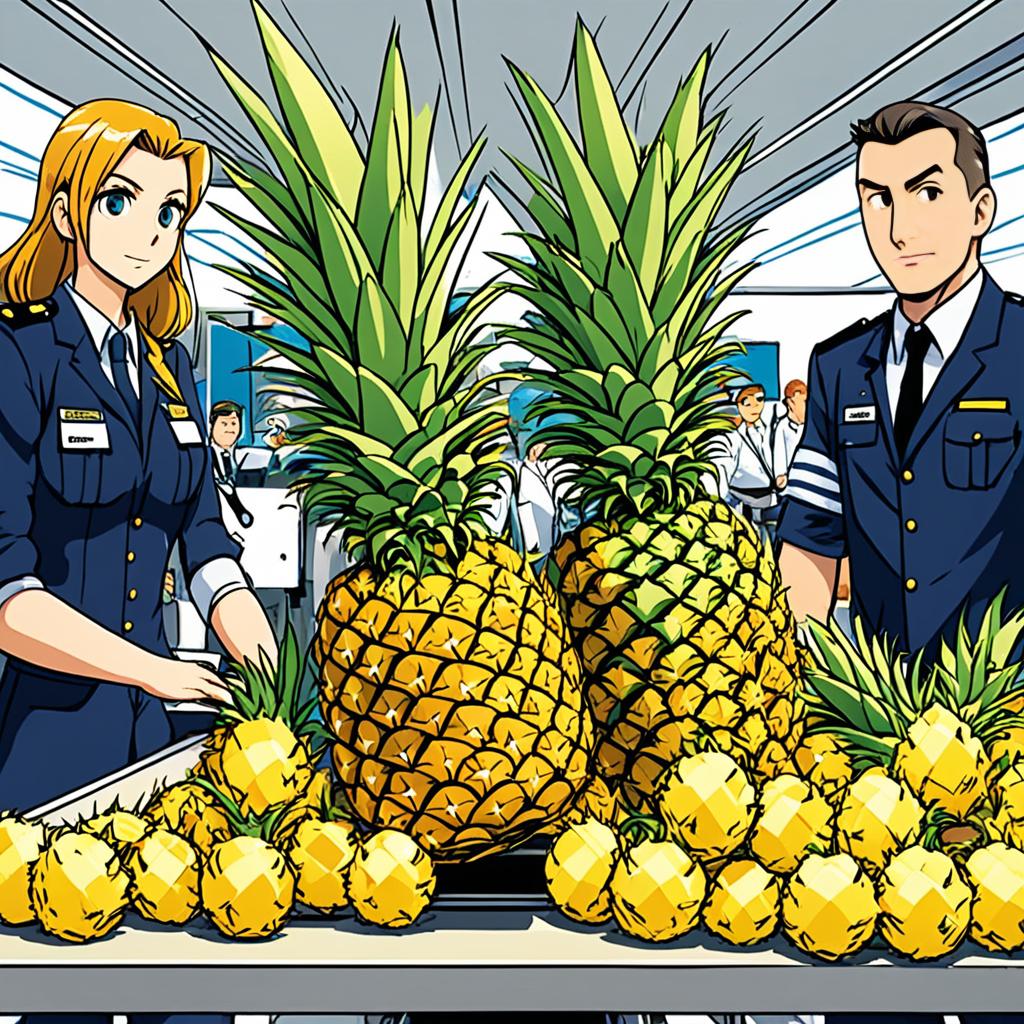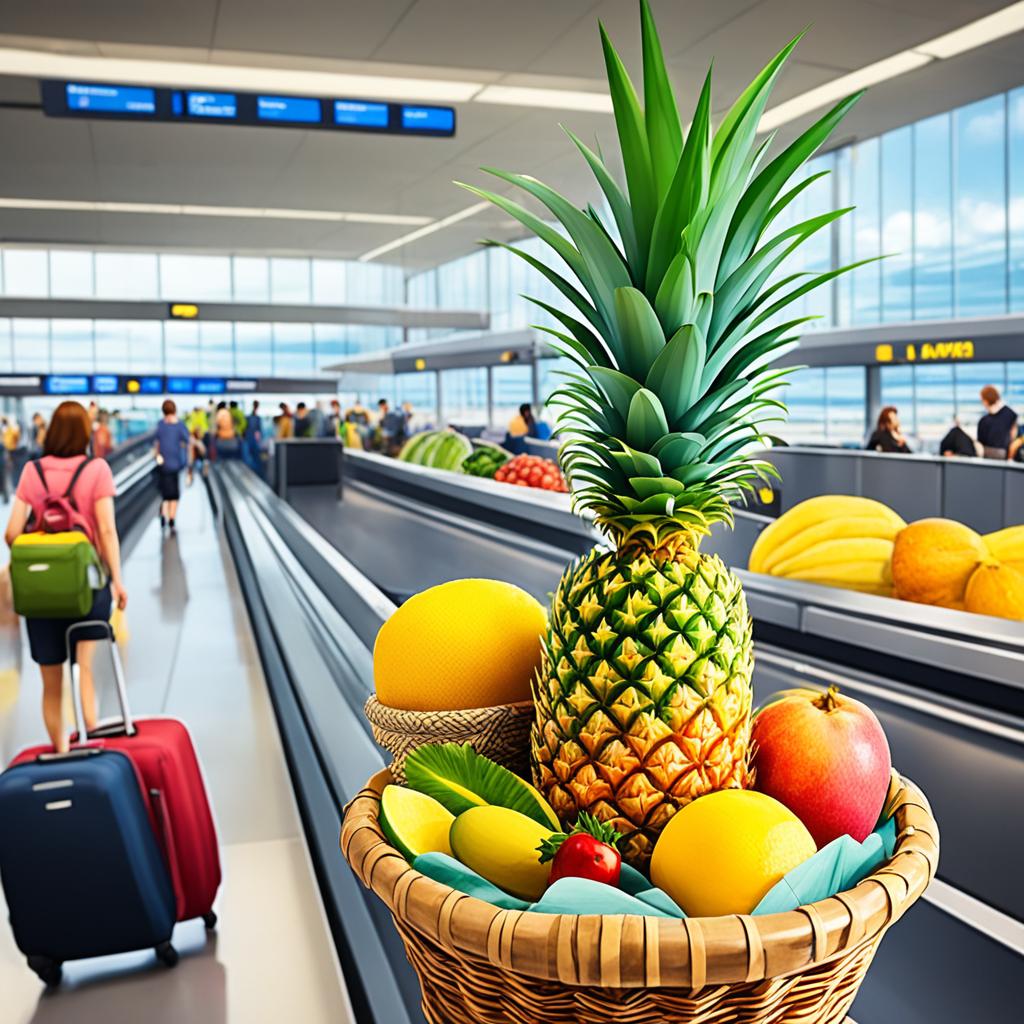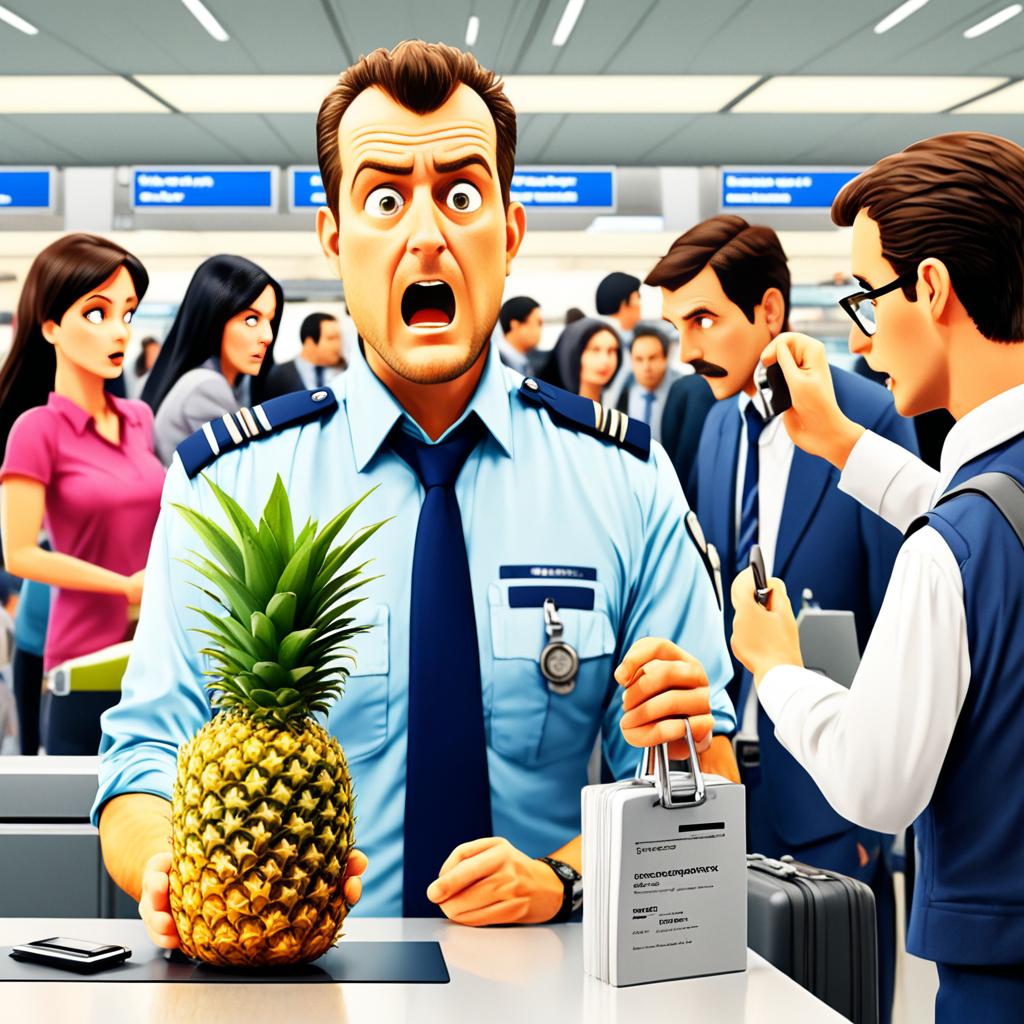When planning a trip from Hawaii to the mainland, one question may arise: can you bring pineapples with you on the plane? It’s a common belief that fresh fruits and vegetables are prohibited from being brought from Hawaii due to the risk of invasive pests. But what about pineapples?
Contrary to popular belief, pineapples are actually allowed to be brought back to the mainland, as long as they pass inspection. The U.S. Department of Agriculture (USDA) has specific guidelines in place to ensure the safety and protection of mainland crops.
In this article, we will explore the rules and guidelines for bringing pineapples from Hawaii to the mainland, including TSA and USDA regulations, purchasing options, transportation methods, and food safety tips. So, if you’re curious about bringing a taste of Hawaii home with you, keep reading to find out everything you need to know!
Rules for Bringing Pineapples from Hawaii to the Mainland

When it comes to bringing pineapples from Hawaii to the mainland, there are specific rules and regulations you need to be aware of. These rules are enforced by both the Transportation Security Administration (TSA) and the U.S. Department of Agriculture (USDA) to ensure the safety of crops and prevent the spread of pests.
The TSA allows you to bring food items on a plane, including pineapples. However, when traveling from Hawaii to the mainland, you will also be subject to the USDA’s Animal and Plant Health Inspection Service (APHIS). The USDA has increased restrictions on bringing fresh fruits to the mainland due to the potential risk of invasive pests that can cause damage to crops.
Despite these restrictions, pineapples are an exception to the USDA rule and are allowed to be brought back to the mainland. However, it is important to declare the pineapples and ensure they pass inspection before bringing them onto the plane. By following these rules, you can help prevent the spread of pests and protect crops in the mainland.
Image:
For a summary of the rules for bringing pineapples from Hawaii to the mainland, refer to the table below:
| TSA Rules | USDA Rules | Inspection Requirement |
|---|---|---|
| Pineapples are allowed | Increased restrictions on fresh fruits | Pass inspection before bringing onto the plane |
| Food items can be brought on a plane | Pineapples exempted from fresh fruit restrictions | Declare the pineapples at inspection |
| Prohibited items due to invasive pests |
It’s essential to adhere to these rules to ensure a smooth and hassle-free travel experience while also protecting the agricultural industry in the mainland. By understanding and following these regulations, you can bring home the delicious taste of Hawaiian pineapples without compromising the health of crops or violating any guidelines.
Guidelines for Bringing Pineapples from Hawaii to the Mainland

When bringing pineapples from Hawaii to the mainland, there are a few guidelines you should keep in mind to ensure a smooth and hassle-free experience. Here are some tips to help you with purchasing, delivery, inspection, cleanliness, quantity, and choosing the right baggage:
Purchasing Pineapples:
You can purchase fresh pineapples from various places in Hawaii, such as the Dole Plantation, an ABC store, or even Costco, which offers great deals. Look for pineapples that are ripe, firm, and have a sweet scent. Avoid any pineapples that have bruises, soft spots, or signs of mold.
Delivery Services:
If you prefer the convenience of having the pineapples delivered to your hotel, some delivery services in Hawaii offer pre-certified and inspected pineapples. This ensures that the pineapples meet the necessary standards and have been thoroughly inspected for cleanliness and quality.
Inspection and Cleanliness:
Regardless of where you purchase the pineapples, it is essential to ensure that they are in good condition, clean, and free from any dirt, debris, or insects. This is important not only for your own satisfaction but also to comply with the USDA’s regulations and prevent any potential spread of pests during transportation.
Quantity and Baggage:
There is no specified limit on the quantity of pineapples you can bring from Hawaii to the mainland. As long as you can fit them in your carry-on or checked baggage, you can bring as many pineapples as you desire. However, it’s important to consider the weight and space limitations imposed by airlines to prevent any inconveniences or additional fees.
To ensure a delightful journey and enjoy the tropical goodness of pineapples, follow these guidelines when purchasing, inspecting, and carrying them from Hawaii to the mainland.
| Guidelines | Tips |
|---|---|
| Purchasing Pineapples | Look for ripe, firm pineapples with a sweet scent. Avoid any signs of damage or mold. |
| Delivery Services | Consider using delivery services that offer pre-inspected and certified pineapples. |
| Inspection and Cleanliness | Ensure the pineapples are clean, free from dirt, debris, and insects. |
| Quantity and Baggage | There is no stated limit, but be mindful of weight and space restrictions imposed by airlines. |
Bringing Pineapples in Carry-On or Checked Baggage

When it comes to bringing pineapples from Hawaii to the mainland, you have the flexibility to choose whether to pack them in your carry-on or checked baggage. Whichever option you prefer, there are a few considerations to keep in mind.
If you decide to bring pineapples in your checked baggage, it’s important to note that they must go through an airport inspection before you check your bags. This inspection ensures that the pineapples meet the necessary regulations and are safe to transport.
On the other hand, if you prefer to have your pineapples with you in the cabin, you can place them in your carry-on luggage. After going through TSA security, there will be a USDA screening station where your pineapples will be inspected to ensure compliance with regulations.
It’s worth mentioning that some airlines may allow you to bring a small package of pineapples for free in your checked luggage. However, there may be limitations on weight and size, so it’s important to check with your specific airline beforehand.
Alternatively, if you’d rather not deal with carrying pineapples on the plane, there are shipping options available. Services like the Dole Plantation or GoldBelly offer shipping from Hawaii to the mainland. While this can be a convenient solution, it’s essential to consider the shipping costs, which can vary depending on the service and the quantity of pineapples you wish to ship.
| Transport Option | Pros | Cons |
|---|---|---|
| Carry-on | Easier access to your pineapples during the journey No additional shipping costs |
Physical space limitations in your carry-on bag Subject to USDA screening |
| Checked Baggage | No need to worry about physical space limitations Some airlines may allow a small package for free |
Requires inspection before checking bags Potential weight and size limitations |
| Shipping | Convenient option if you prefer not to carry pineapples No need to go through inspections |
Shipping costs can be pricey Dependent on shipping service availability |
// In the middle of the content, including the image at a suitable place.
Considering your preferences and circumstances, weigh the advantages and disadvantages of each option to make the best decision for bringing your pineapples from Hawaii to the mainland.
Bringing Pineapples into the U.S. Mainland from International Flights
When traveling from international destinations to the U.S. mainland, the rules for bringing pineapples may vary depending on your foreign destination. While you can bring pineapples on board the plane for consumption during the flight, it’s important to note that you may not be able to bring them into your foreign destination due to their own rules on fresh produce. Each country has its own regulations regarding the importation of fruits and vegetables, which may restrict or prohibit the entry of pineapples.
Before you travel, it is crucial to check the specific restrictions and guidelines of your foreign destination regarding the importation of fresh fruits. Failure to comply with foreign destination rules may result in fines, confiscation of the pineapples, or other penalties.
Furthermore, when bringing pineapples into the U.S. from international flights, you must declare them and permit them to be inspected by U.S. Customs and Border Protection (CBP) officers. It is essential to truthfully complete the customs declaration form and indicate that you are carrying pineapples. This declaration allows CBP officers to carry out appropriate inspections to ensure compliance with U.S. regulations.
During the inspection process, CBP officers may examine the pineapples to ensure they meet the necessary standards for entry into the U.S. mainland. This inspection is conducted to protect domestic agriculture and prevent the introduction of pests or diseases that could potentially harm crops and natural resources.
To facilitate the inspection process, it is advisable to present the pineapples in a clean and accessible manner. Make sure the pineapples are free from any signs of damage, pests, or contaminants. Cooperation with CBP officers and adherence to their instructions will help ensure a smooth and efficient inspection process.
Comparison of Foreign Destination Rules for Pineapple Importation
| Country | Rules on Pineapple Importation |
|---|---|
| Canada | Pineapples are allowed with some restrictions. Check the Canadian Food Inspection Agency’s guidelines for more information. |
| United Kingdom | Pineapples can be brought into the UK but must comply with the rules of the Department for Environment, Food and Rural Affairs (DEFRA). Ensure you are familiar with their import requirements. |
| Australia | Strict biosecurity laws in Australia regulate the importation of fresh fruits. Pineapples may require special permits and treatments. Refer to the Department of Agriculture’s guidelines for more details. |
It is crucial to research and understand the specific regulations of your foreign destination before attempting to bring pineapples from international flights. By following the appropriate customs declaration procedures and complying with foreign destination rules, you can ensure a seamless experience when traveling with pineapples.
Food Safety and Storage for Pineapples During Travel
When you’re traveling with pineapples, it’s important to consider their storage duration and proper handling to ensure their freshness. Whole pineapples can typically last for 1 to 2 days at room temperature, making them a great option for short trips. However, if you’ve cut the pineapples, they should only be kept at room temperature for about 2 hours before they should be discarded.
To keep your pineapples cooler for longer periods, especially during longer journeys, you can use ice packs or frozen gel packs. These can help maintain a lower temperature and extend the shelf life of your pineapples. Just make sure that if you’re bringing ice packs in your carry-on luggage, they must be completely frozen when going through airport security. Partially thawed ice packs will likely be confiscated.
By following these storage guidelines and using ice packs, you can ensure that your pineapples stay fresh and delicious throughout your travels. Whether you’re heading back from a tropical vacation or bringing home a taste of Hawaii, proper food safety practices will help you enjoy sweet and juicy pineapples even after a long journey.


